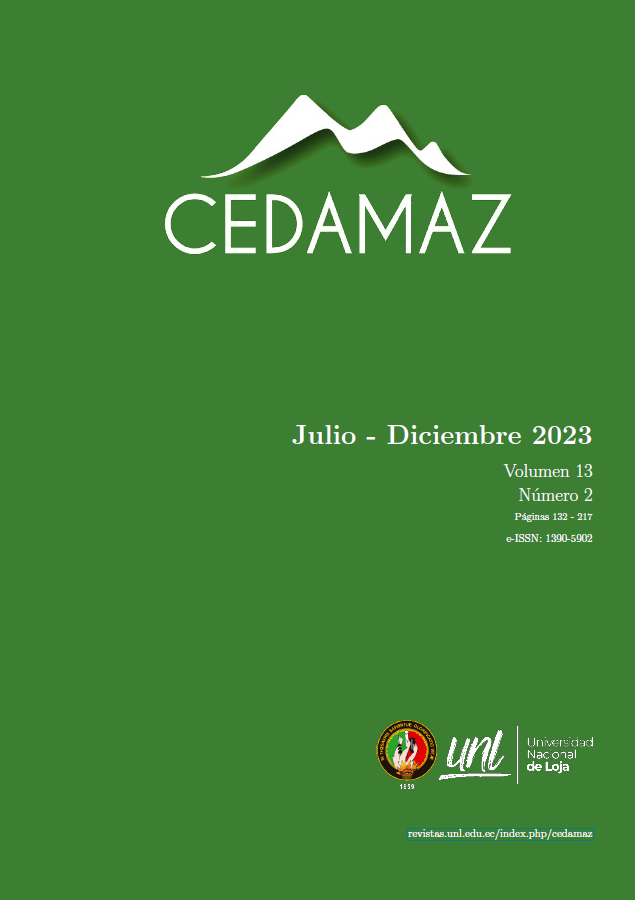Diagnosis of wildlife conflicts in the inter-Andean dry valley of Vilcabamba, southern Andes of Ecuador.
DOI:
https://doi.org/10.54753/cedamaz.v13i2.2047Keywords:
Biodiversity, Animal behavior, Traditional knowledge, EcuadorAbstract
Wildlife-people conflicts are one of the most critical issues in urban and rural environments around the world. In spite of being a growing subject of study, there are still important gaps in knowledge regarding its dynamics and impact, mainly when the subject involves minor species such as foxes, opossums and squirrels, or particular ecosystems that have not received much research interest, such as the inter-Andean valleys. Ecuador is a country in which the primary economy of the rural peasantry is based on smallholder production processes, which is why wildlife attacks on domestic animals or crops are a serious problem for peasant families. This study was carried out in the dry inter-Andean valley of Vilcabamba, in southern Ecuador. Using semi-structured interviews, a general diagnosis of conflicts between wildlife and local people was made. Two main types of conflicts were identified: predation of domestic animals and damage to crops, and others considered secondary: medicinal use of wildlife and ophidiophobia. The main species involved in the conflicts are Simosciurus nebouxii, Didelphis marsupialis, Neogale frenata, Lycalopex culpaeus and some species of diurnal birds of prey. In addition, it was identified that the basic response of local people to this type of conflict is the lethal control of the problem species by different means (poisoning, hunting). The information presented here constitutes a key baseline for the future management of this type of conflict in this study locality.Metrics
Metrics Loading ...
Published
2023-12-31
How to Cite
Ordóñez-Delgado, L., Salinas, M. J., & Maldonado, D. (2023). Diagnosis of wildlife conflicts in the inter-Andean dry valley of Vilcabamba, southern Andes of Ecuador. CEDAMAZ, 13(2), 172–181. https://doi.org/10.54753/cedamaz.v13i2.2047
Issue
Section
Review Articles
License
Copyright (c) 2024 CEDAMAZ

This work is licensed under a Creative Commons Attribution-NonCommercial-NoDerivatives 4.0 International License.
Those authors who have publications with this journal, accept the following terms:
- After the scientific article is accepted for publication, the author agrees to transfer the rights of the first publication to the CEDAMAZ Journal, but the authors retain the copyright. The total or partial reproduction of the published texts is allowed as long as it is not for profit. When the total or partial reproduction of scientific articles accepted and published in the CEDAMAZ Journal is carried out, the complete source and the electronic address of the publication must be cited.
- Scientific articles accepted and published in the CEDAMAZ journal may be deposited by the authors in their entirety in any repository without commercial purposes.
- Authors should not distribute accepted scientific articles that have not yet been officially published by CEDAMAZ. Failure to comply with this rule will result in the rejection of the scientific article.
- The publication of your work will be simultaneously subject to the Attribution-NonCommercial-NoDerivatives 4.0 International (CC BY-NC-ND 4.0)









